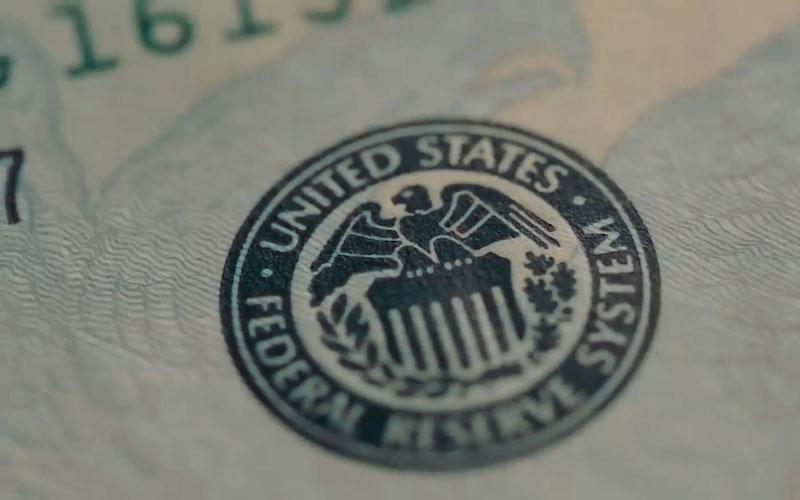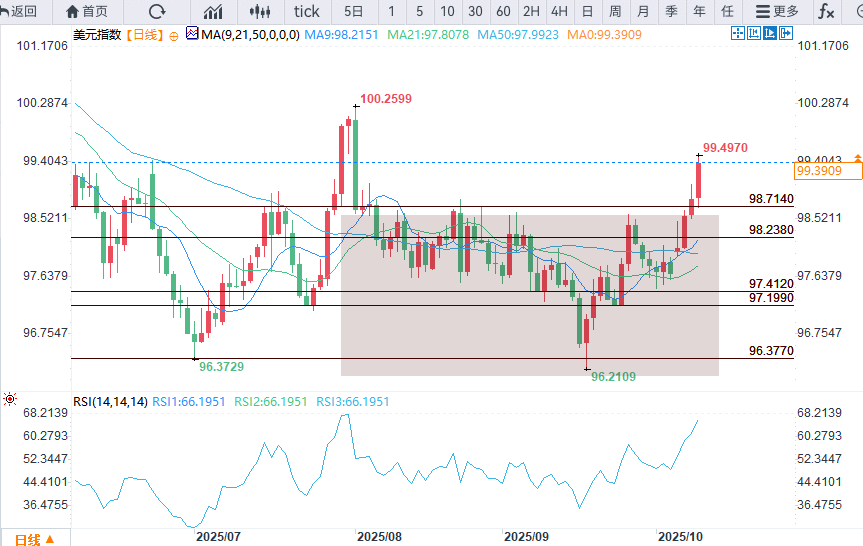The weakening of the yen and euro pushed up the US dollar index, and the Federal Reserve released signals to support the rise
2025-10-10 01:38:30

USD/JPY daily chart
The yen continued its decline, hitting 153.229 against the dollar, its lowest level since mid-February. Traders attributed the yen's decline to policy concerns raised by Japan's new ruling party leader, Sanae Takaichi, who has signaled a consistent fiscal expansion with the central bank's policy stance.
Although the yen rebounded briefly after Sanae Takaichi mentioned avoiding excessive yen depreciation, market doubts about her government's ability to deliver on its economic stimulus promises remain, and this uncertainty is putting pressure on the yen. Corpay analysts pointed out that the market is increasingly skeptical about Sanae Takaichi's ability to push through fiscal measures or prevent the Bank of Japan's tightening plan, especially against the backdrop of high domestic inflation.
French political turmoil weighs on euro
Following the resignation of French Prime Minister Sebastien Lecornu and his cabinet earlier this week, the euro plummeted to 1.1546, its lowest level since August 5. The ongoing political deadlock has stalled efforts to reduce the budget deficit, dampening investor confidence. The market now awaits French President Emmanuel Macron's new appointment, expected within 48 hours. The euro's weakness further bolstered the dollar index's bullish momentum.
Fed minutes show disagreement on future rate cuts
The dollar was supported by the hawkish tone in the Federal Reserve's September meeting minutes. While officials agreed that a rate cut was necessary given the slowing labor market, they remained cautious about inflation, reinforcing a wait-and-see approach. New York Fed President John Williams supported further rate cuts and cited risks to employment, but traders have scaled back their expectations for multiple rate cuts.
According to data from the CME FedWatch tool, the probability of a 25 basis point rate cut at the October meeting is 95%, but the probability of a rate cut in December has dropped to 80%.
Treasury yields hold steady as U.S. government shutdown enters ninth day
U.S. Treasury yields were little changed, with the 10-year yield remaining at 4.136%. The U.S. government shutdown, now in its ninth day, is causing growing concern among investors. The Internal Revenue Service (IRS) has temporarily laid off over 34,000 employees this week, and the release of key labor market data has been delayed. However, Wednesday's 10-year Treasury auction went smoothly, a sign that demand for U.S. Treasuries remains unaffected.
Market Outlook: US Dollar Index targets key resistance at 100.257

(Source of US Dollar Index daily chart: Yihuitong)
With the US dollar index breaking through the 98.834 mark, bulls are now targeting the high of 100.26 set on August 1. Support is located in the range of 98.714 to 98.238, with stronger buying interest around the 50-day moving average (97.99).
The continued weakness of the yen, the volatility of the euro, and the Federal Reserve's hesitation to adopt "aggressive easing" are likely to maintain the dollar's strength. However, further gains for the dollar may depend on the resolution of the US government shutdown and the performance of future economic data (once released).
At 01:36 Beijing time, the US dollar index was 99.3900, up 0.56%.
- Risk Warning and Disclaimer
- The market involves risk, and trading may not be suitable for all investors. This article is for reference only and does not constitute personal investment advice, nor does it take into account certain users’ specific investment objectives, financial situation, or other needs. Any investment decisions made based on this information are at your own risk.





















